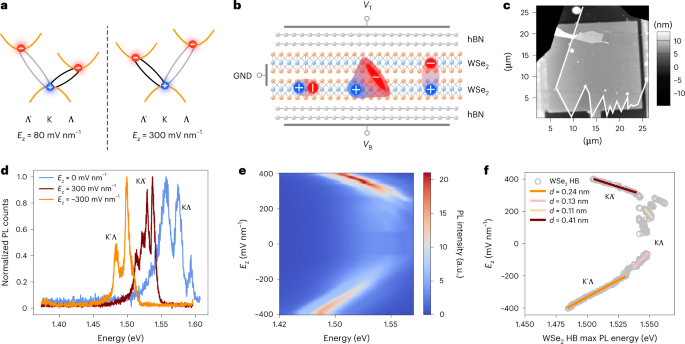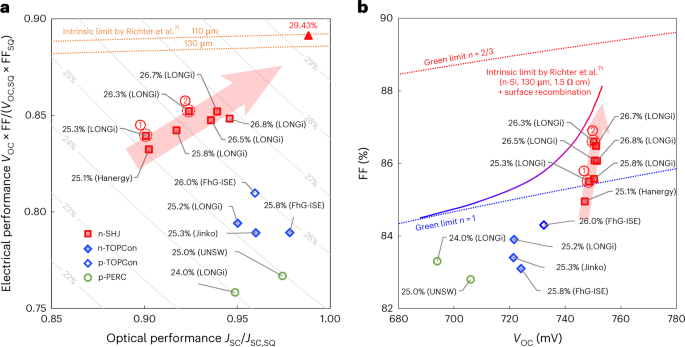電子デバイスの電子に代わってデータを輸送する準粒子である励起子間の相互作用を制御する方法を発見した。これは、2次元(2D)半導体材料に電界をかけるものです。 EPFL engineers have found a way to control the interactions between excitons – quasiparticles that may one day transport data and replace the electrons in electronic devices. The engineers’ method involves applying an electric field to a two-dimensional (2D) semiconducting material.
2023-05-09 スイス連邦工科大学ローザンヌ校(EPFL)
◆EPFLのエンジニアたちは、励起子の研究によってこれらの問題を克服しようとしており、励起子は、電子の代わりに光を使用してデータを運び、計算を行うことができるため、より小型で高速かつ消費電力の低い次世代の電子デバイスの鍵となります。EPFLの研究チームは、励起子の反発力を制御する方法を開発し、研究結果はNature Photonics誌に掲載されました。
<関連情報>
- https://actu.epfl.ch/news/epfl-discovery-brings-us-closer-to-next-generation/
- https://www.nature.com/articles/s41566-023-01198-w
ファンデルワールスヘテロ構造におけるハイブリッドエキシトン輸送の電気的制御 Electrical control of hybrid exciton transport in a van der Waals heterostructure
Fedele Tagarelli,Edoardo Lopriore,Daniel Erkensten,Raül Perea-Causín,Samuel Brem,Joakim Hagel,Zhe Sun,Gabriele Pasquale,Kenji Watanabe,Takashi Taniguchi,Ermin Malic & Andras Kis
Nature Photonics Published:20 April 2023
DOI:https://doi.org/10.1038/s41566-023-01198-w

Abstract
Interactions between out-of-plane dipoles in bosonic gases enable the long-range propagation of excitons. The lack of direct control over collective dipolar properties has so far limited the degrees of tunability and the microscopic understanding of exciton transport. In this work we modulate the layer hybridization and interplay between many-body interactions of excitons in a van der Waals heterostructure with an applied vertical electric field. By performing spatiotemporally resolved measurements supported by microscopic theory, we uncover the dipole-dependent properties and transport of excitons with different degrees of hybridization. Moreover, we find constant emission quantum yields of the transporting species as a function of excitation power with radiative decay mechanisms dominating over nonradiative ones, a fundamental requirement for efficient excitonic devices. Our findings provide a complete picture of the many-body effects in the transport of dilute exciton gases, and have crucial implications for studying emerging states of matter such as Bose–Einstein condensation and optoelectronic applications based on exciton propagation.



